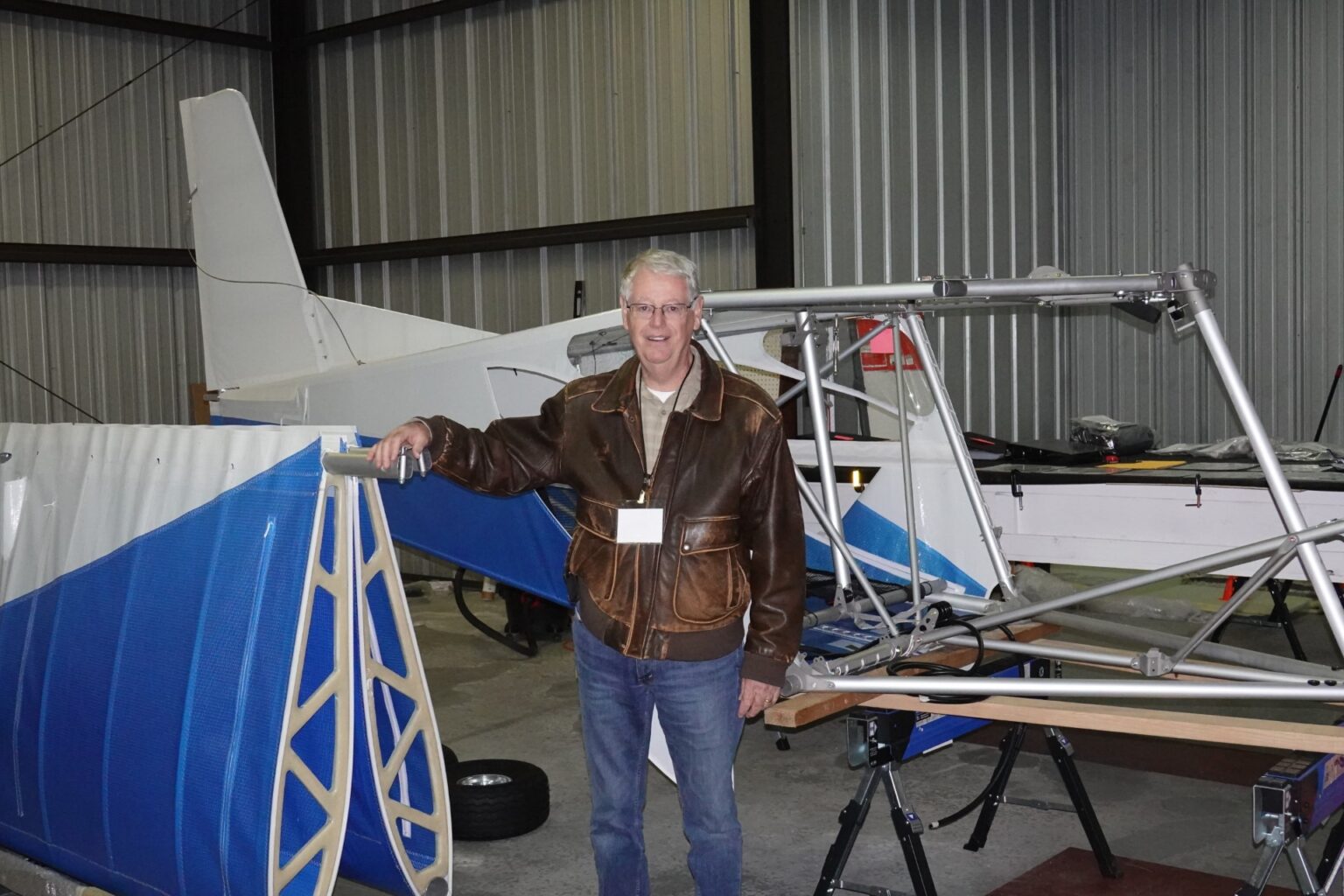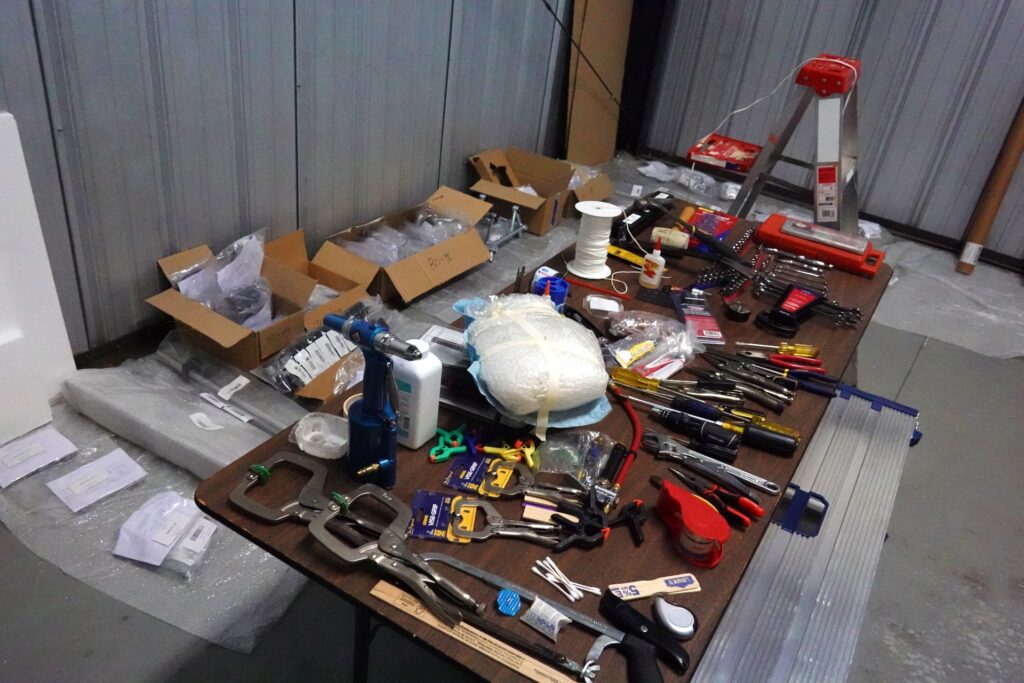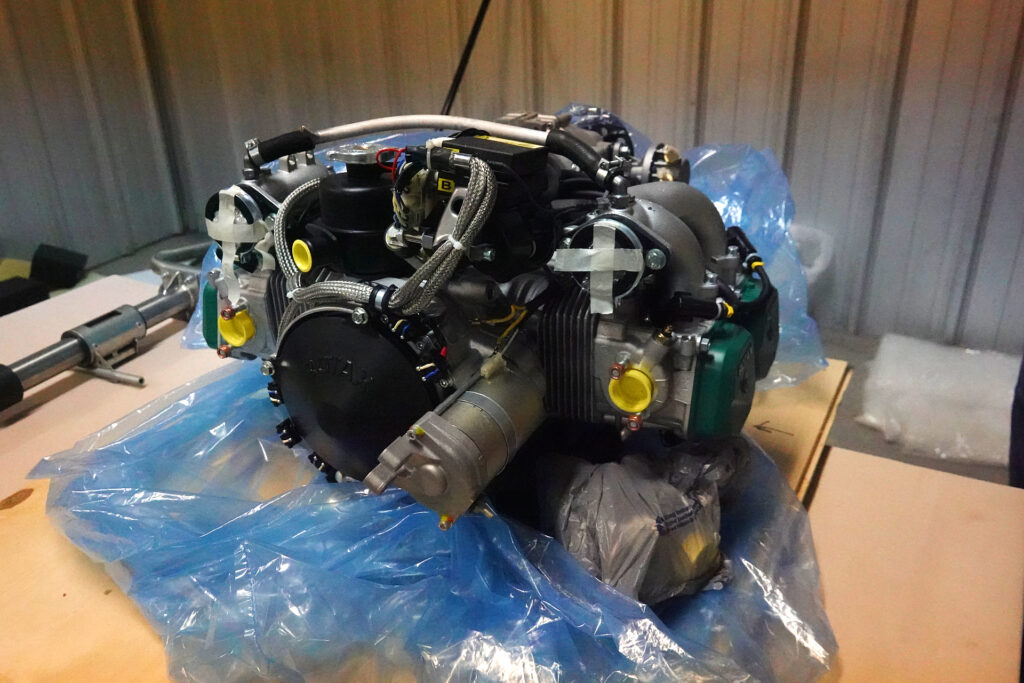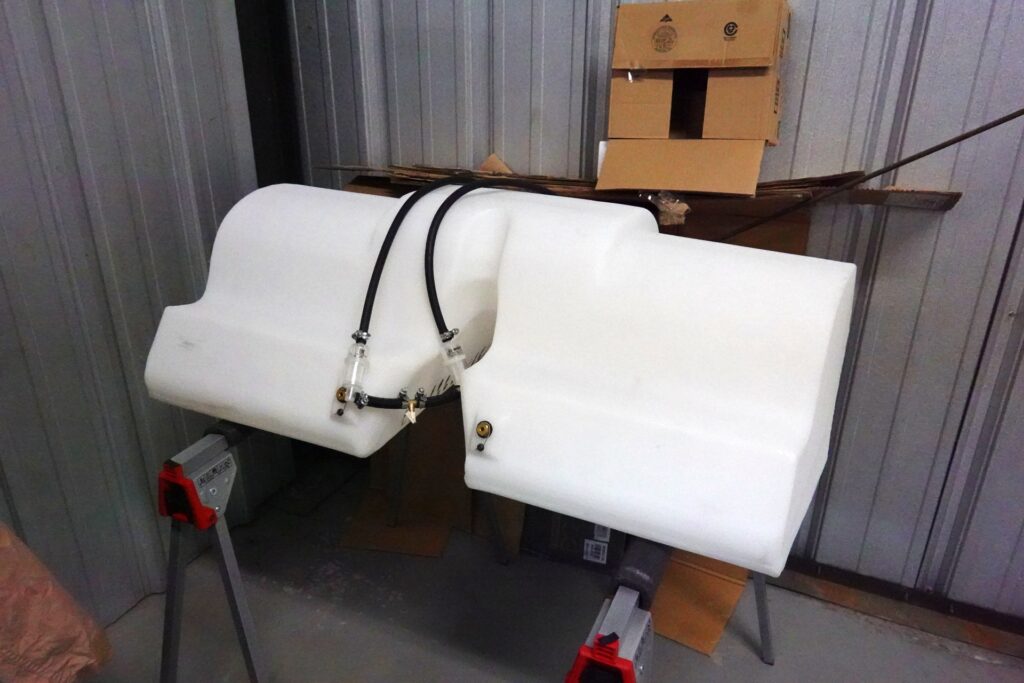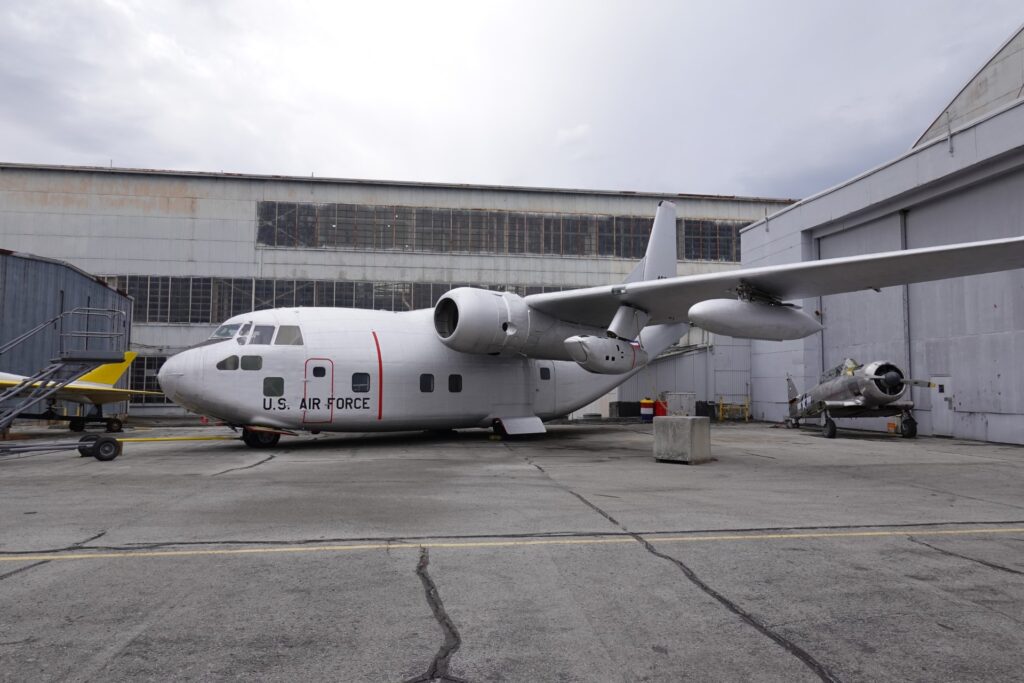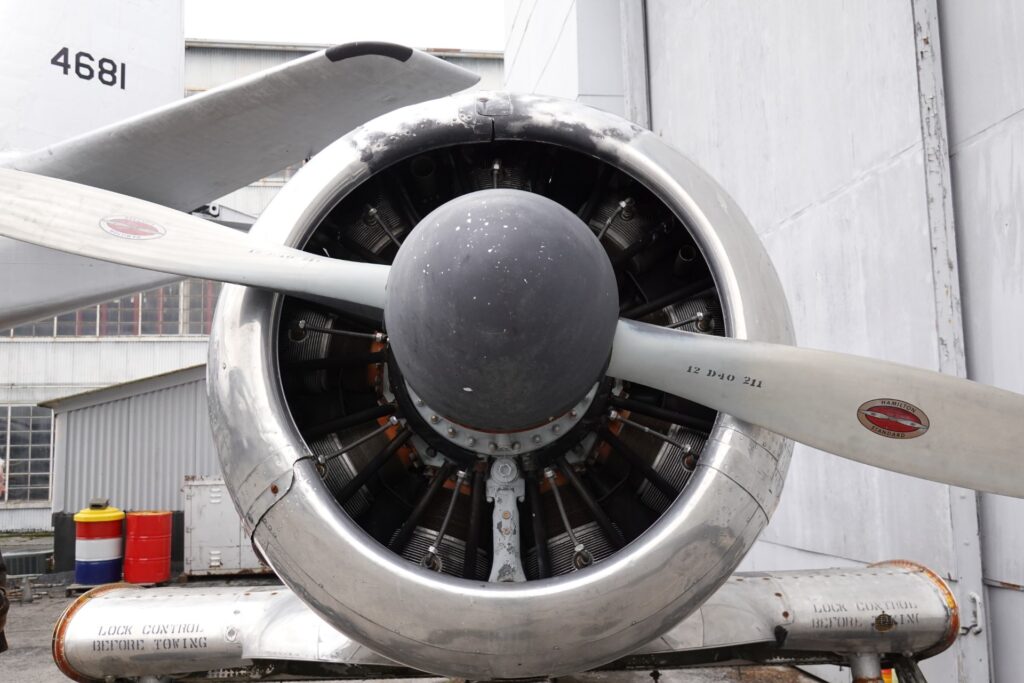HAGERSTOWN, MD–From a young age, Pete Walters was fascinated with the thought of taking to the sky.
Pete’s father flew planes during World War II and, naturally, Pete wanted to fly as well. He wanted to be a helicopter pilot. In college, he got his glider pilot’s license during the fall of his senior year and now has a private pilot’s license for powered aircraft.
Born in St Louis, Missouri, raised in Buffalo, New York and Washington DC, he now resides in Waynesboro, Pennsylvania with his wife, Karen.
A friendly and talkative guy who doesn’t hesitate to answer in detail any questions you throw at him. He’s the type of person you’d enjoy having as a next-door neighbor.
On approach
I met up with Pete at the Hagerstown Regional Airport on a rainy Saturday morning for a tour of the facility and to see what Pete has been keeping himself busy with now that he is retired from a post-military career and financial planning.
Pete is now a member of the Experimental Aircraft Association, which is a non-profit organization based in Oshkosh, Wisconsin, and has a mission to grow aviation through participation and education, to deliver educational offerings and activities that guide new participants, and to reduce barriers to participation. Pete says the EAA is a wonderful group of aviation enthusiasts who enjoy all aspects of aviation. Chapter 36 is the group Pete belongs to at the Hagerstown airport.
Our first stop was behind the Hagerstown Aviation Museum. There on the blacktop, they have several WWII-era planes in varying degrees of refurbishment. Among them was a Fairchild C-119 Flying Boxcar, which is a large military transport plane. The Fairchild Company moved to Hagerstown in 1931 where it manufactured thousands of aircraft before production ended in 1984.
The doors to the museum were locked that morning, so we were unable to tour the facility indoors but according to their website, they have nearly 20 different planes dating from 1919 through 1959.
After we left the museum area, Pete explained what some of the other buildings were used for such as the Pittsburgh Institute of Aeronautics, which is one of three branch campuses of PIA, not including their main campus. This top-notch aviation school trains students to become aircraft mechanics and avionics technicians.
The size of the regional airport surprised me – it was much larger than I realized. After about an hour of touring the facility and learning what goes on in each of the buildings, Pete drove us around to the other side of the airport to the rows of blue hangars. We stopped at his hangar and went inside just before the rain started coming down again. Behind this big garage door is where he has spent a portion of his summer. The hangar is full of very well-organized assortment of shiny aluminum parts, tools, hardware, books and laminated fabric pieces.
Pete is building his own airplane from the ground up.
Air Traffic Control
The kit is manufactured by a South African-based company called SkyReach and imported by an Illinois-based company called AeroSport. The model of the plane is called a BushCat. It is a 2-seat Light Sport Aircraft (LSA) and can be assembled in approximately 400 hours according to Pete. This plane has a few engine options; Pete went with the Rotax 912 4-cylinder naturally aspirated engine. The engine has liquid-cooled cylinder heads and air-cooled cylinders and outputs 100 horsepower. Rotax is the most popular manufacturer for small aircraft engines.
For avionics, Pete said he decided to go with dual Dynon HDX 7” units, their flagship model. As someone unfamiliar with aviation, I was curious how much something like this project would cost. Pete estimated he has spent approximately $43,000 for the airplane kit, $15,000 for avionics, and $22,000 on the Rotax engine. Some people want a fancy Porsche to drive during their retirement; Pete wanted his own plane.
Flying this type of plane requires a sport pilot license, which takes a minimum of 20 hours to attain. Pete has long been flying gliders but only in the past couple years did he get his license for fly powered aircraft – and now that he has it, he decided it was time to build a plane for himself.
After placing the order for the kit, Pete was expecting delivery in Dec. 2020 but it was delayed until summer of 2021. It showed up on a tractor-trailer and Pete needed a forklift to unload it. Fortunately, the airport had one and sent it along with some helpers to get the kit unloaded from the truck. Once inside, Pete started to get all the bags of bolts and parts organized to make assembly of the plane go more smoothly. The plane delivery coincided with the Oshkosh AirVenture show, which Pete attended. For this one week in July every year, the Oshkosh Wittman Regional Airport in Wisconsin becomes the busiest airfield in the world. Pete said there are so many attendees that people usually camp the night under the wings of their planes.
Pete walked me through the general steps for assembly and what he has done so far, including putting all the aluminum pieces together for the airframe and lacing the fabric for the body and wings. The lacing is a very tedious and time-consuming endeavor that requires multiple passes to make the fabric properly taught. Imagine lacing your shoes but with hundreds of eyelets and then after they’re laced you have to go back and snug the laces tighter and tighter until the material is pulled tight enough that it could act as a drum skin. At the time of my visit, Pete was waiting for some fiberglass pieces to come back from the paint shop in order to continue with the assembly. Pete and his wife took a riveting class in order to master the technique of attaching pieces of metal together using rivets.
There is a thick binder containing the assembly instructions, piles of bolts and hardware pieces, all organized by an alphanumeric designation that match up with the diagrams in the instructions binder. For example, step 256 on page 120 might be to connect part G78 to Q34 using bolt B13. Bolt B13 needs to face downward because if nut N11 loosens up during flight and falls off, bolt B13 will not fall out unless Pete decides to do some barrel rolls. To someone like me, not in the know, I was intimidated by the sheer level of detail and how mindful one must be while building an airplane.
Flight Plan
Pete rattled off a dizzying amount of information about the FAA requirements for everything from the licensing to the LSA designation. I had no idea there was so much to know about building and flying a small aircraft.
For example, after the plane is built, an FAA inspector needs to come to the hangar to not only inspect the plane but also review his logbook, which includes all the details and photos of the build. After the FAA inspector signs off on the build, Pete will begin Phase 1 of testing his new aircraft, which involves taking it up and down the runway to test the controls, brakes, engine, etc. After that, he can take to the sky but only within a range of 10 miles from the airport. Eventually the plane will be deemed airworthy and he will be able to fly it like any other small aircraft.
I asked where he plans to fly his plane once it is airworthy to which he replied, “Probably to get a $100 hamburger”. Noticing my confused expression, he explained that it is aviation slang for an excuse to fly. Hop in the plane for a morning flight, stop at another airport, grab lunch in town, and then fly back, hence the term $100 hamburger.
Pete said he also wants to see the New England fall foliage with his wife, visit his son in Atlanta, and eventually fly to the First Flight Airport, operated by the National Park Service in Kitty Hawk.
For now, Pete has quite a few more hours of work ahead of him to finish building his plane, but once it is complete and passes the FAA requirements, the small aircraft buzzing by your house next summer might just be Pete in his BushCat.
Adam Clugh is the Content Curator for Local.News.



